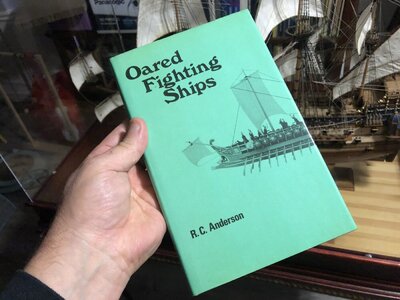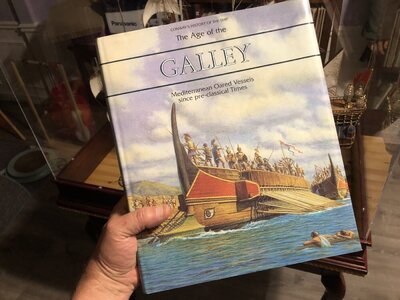- Joined
- Aug 22, 2022
- Messages
- 4
- Points
- 3
Hello fellow builders. I'm a novice builder and I'm planning a build involving Heller's 1/225 scale Roman Bireme kits. I've done a lot of research on the biremes and looked at several blogs by other builders. One of the most common comments I've seen is that the ship kit is too short. The hull from ram peak to stern is 138mm. At 1/225 scale this calculates to a length of 31 meters which is right in the middle of the estimated length ranges for biremes. I obtained two kits with the intention of using them to kit bash to make one longer model. But with the information above I've decided not to try and create a longer model. I've decided to use the kits to depict the same ship in both sailing and battle configurations. The sailing configuration is fairly straight forward as that is what is provided in the instructions. My questions relate to the following:
1. To prepare for combat the masts and spars would be taken down. Would the bowsprit and spar also be taken down? Several references noted the use of a pole extended forward of the hull with a container of flammable liquid hanging from it. The liquid would be poured on the enemy deck and fire arrows used to ignite it.
2. Can the masts and spars be taken down at sea or would this be done in port? If in port, would the masts and spars be kept on board or be left on shore? I'm assuming in port and left on shore. All the references I've looked at are silent on this.
3. Did the Roman ships carry any boats? The kits don't include a boat but I have several in the spares box.
Thanks in advance for your thoughts. If you have any ideas for this build I'd appreciiate them as well.
John
1. To prepare for combat the masts and spars would be taken down. Would the bowsprit and spar also be taken down? Several references noted the use of a pole extended forward of the hull with a container of flammable liquid hanging from it. The liquid would be poured on the enemy deck and fire arrows used to ignite it.
2. Can the masts and spars be taken down at sea or would this be done in port? If in port, would the masts and spars be kept on board or be left on shore? I'm assuming in port and left on shore. All the references I've looked at are silent on this.
3. Did the Roman ships carry any boats? The kits don't include a boat but I have several in the spares box.
Thanks in advance for your thoughts. If you have any ideas for this build I'd appreciiate them as well.
John



